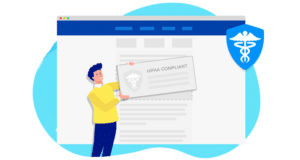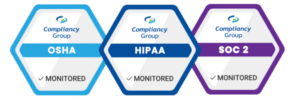How to Make a HIPAA Compliant Website
When it comes to making a HIPAA compliant website, odds are you don’t know where to begin.
That’s why we’ve put together this handy HIPAA website guide. Start here to learn some of the fundamentals about what makes a HIPAA compliant website so much safer for your clients, staff, and prospective patients.
HIPAA Website Basics
Before you can understand how to make a HIPAA compliant website, first we need to take a look at some HIPAA basics.
HIPAA is a national regulation that sets standards for the privacy and security of protected health information (PHI). PHI is any demographic information that can be used to identify a health care patient. Common examples of PHI include name, address, date of birth, telephone number, email address, and medical records, to name a few.
Under HIPAA, both health care providers and health care vendors who encounter PHI are mandated to be HIPAA compliant. Providers are called “covered entities” under HIPAA, and vendors are considered “business associates.” That means that whether your organization is a dental practice or an IT provider working in health care, you must have a HIPAA compliant website in order to protect any information captured that constitutes PHI.
Does Your Website Need to be HIPAA Compliant?
Before you try to make your website or server HIPAA compliant, first you should ask yourself these few key questions to determine if your website needs to be HIPAA compliant in the first place:
- Are you transmitting PHI through your website?
- Are you storing PHI on a server connected to your website?
- Are you collecting PHI on your website?
If the answer to any of these questions is yes, then your website needs to be HIPAA compliant.
How to Make Your Website HIPAA Compliant
Using HIPAA compliant web forms is a good first step. These will ensure that any PHI you collect will be securely captured, without fear of being left unsecure and exposed to the risk of a data breach. We have a separate write-up for you about HIPAA compliant web forms to find the best solution for your website.
Data that is collected in these forms should then also be encrypted. HIPAA sets specific standards for encrypting data both “in motion” and “at rest.” HIPAA encryption is a complicated topic all its own. It’s essential to running a successful health care business in the digital age. This includes data that is stored internally, in addition to PHI stored on third-party or off-site servers. Read more about HIPAA encryption to find the best way to protect PHI without harming your marketing efforts.
The most important thing to remember about HIPAA compliant websites is that the data being collected must be kept private and secure throughout the entire course of its use, storage, or transmission.
By implementing safeguards to protect PHI on your website, you’re already performing some of the key components required for an effective HIPAA compliance program.
HIPAA compliance from Compliancy Group gives your business the tools you need to confidently satisfy the law, along with security policies to guide the creation and implementation of HIPAA compliant websites.





